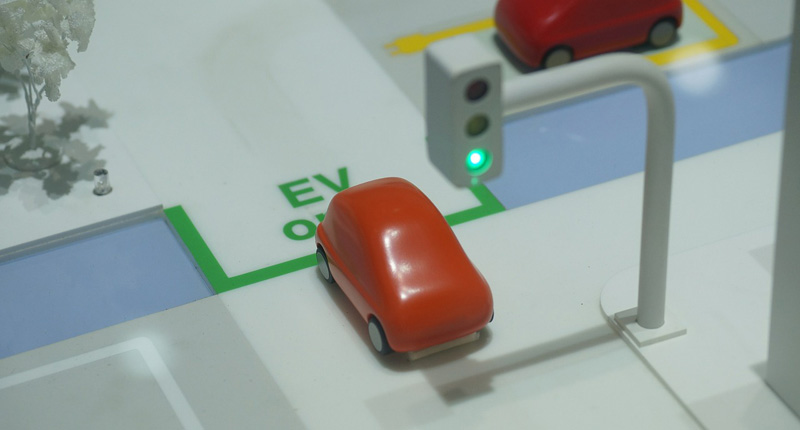AI is disrupting education. But despite what the headlines (and some ChatGPT horror stories) might suggest, South African teachers aren’t being replaced — they’re…
4 examples of cutting edge car tech that’ll make our roads safer

Two major global tech showcase events took place in the US this month, revealing impressive technology from the world’s leading car manufacturers. Sexy design, supreme performance and green efficiencies aside; what had most people talking at the 2015 North American International (Detroit) Auto Show and 2015 Consumer Electronics Show (CES), in Las Vegas, were the next-generation safety advancements.
In an indication of just how car tech is carrying the torch for convergence, this year’s CES looked more like a car show than a gadget fest, as big car brands unveiled their concepts and prototypes.
The latest developments have mainly headed toward utility and not merely convenience. Both in-car and exterior features look to make the driving experience a more connected and safe one.
South Africa’s car safety tech takes it cue largely from international R&D teams. However, innovation in the local market is driven through downstream industry players, such as vehicle tracking companies who are very often much more than just that.
Tracker’s Ian Adendorff, says, “It’s an exciting time for vehicle safety. We are seeing how tech innovation is gathering momentum that is no longer incremental, but is multi-dimensional. Connectivity is playing a central role from which an ‘Internet of Things’ makes anything possible. Ultimately, though, it’s about safer cars and passengers on our roadsâ€.
The envelope has been emphatically pushed this year. You can now start your car with your watch! Yes, wearable tech has fused with car tech and that is not the only working innovation to catch the eye.
Infotainment
Dashboard consoles are getting bigger. Twelve-inch screens with fewer knobs and switches means less driver distraction. In fact, many models on display were equipped with all-touch screen interfaces.
What is even more impressive is the gesture-recognition functionality. Sensors pick up common hand movements made in front of the console by the driver without actually touching it. When you need a volume change, climate change or want to zoom back and forth on a map or scroll through a menu, simply make the gesture while your eyes stay on the road. Gesture-recognition is still in early stage development.
Apps continue to integrate into onboard systems. Some manufacturers are increasing engagement with custom-built, in-car services so that useful geolocated offers and recommendations pop up as you near them. These are based on your particular interests and location, or where you are programmed to go in the navigation system.
Trip data communicates that you are on a road trip and may, for instance, need to rest or check in at a nearby hotel. Not only will the name and address of the hotel appear on the console, you will even receive a quote – with booking capability – for the exact amount of occupants, with notification of a special minor’s rate, sensing if one is a child.
Connectivity
It will no longer just be about integrating mobile devices or accessing the car’s mobile 4G Wi-Fi Internet hotspot. Cars will soon be connected to their environment in a richer way.
Augmented reality has been around for a number of years in the mobile space with limited success, but now things get interesting. Visitors to the Detroit show could simulate driving with real time assistance displayed seamlessly. A digitised screen presenting information from the surroundings overlays the car’s windscreen. Picture a car changing lanes in front of you. As the vehicle enters your lane you immediately see the distance, area of potential impact, and colour markings highlighting your required angle of direction.
The predictive aspect is the most impressive. You will soon get warnings of potential dangers at four-way stops. Once again, car enthusiasts have to wait, as this still requires huge amounts of testing.
Active health monitoring
Another slick concept in the works is the idea of seatbelt or steering wheel sensors that track driver vital statistics. The ultimate goal: a car that can pull over and call paramedics if the driver has a heart attack or requires emergency medical assistance.
Self-driving cars
Leading manufacturers had their various self-drive prototypes in tow. It was announced this week that drivers in the US would have to wait until at least 2020 for the highly anticipated Google Car – the model that seems to have captured the imagination. However, with concerns around road logistics, regulation and legislation of autonomous driving, that may be an ambitious date.
A component of autonomous driving that is already installed in vehicles at CES is the integration of laser lights with assistance systems and vehicle sensors. The laser lights work with the navigation system to illuminate corners well in advance and provide early warning of people or animals at night from a distance of up to 100 meters. Laser lights offer an impressive long beam range of up to 600 meters. Plans are in place to deploy lights that automatically shift to avoid direct beams aimed at oncoming traffic.

